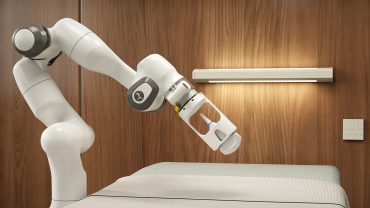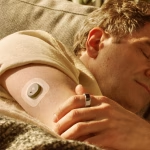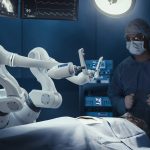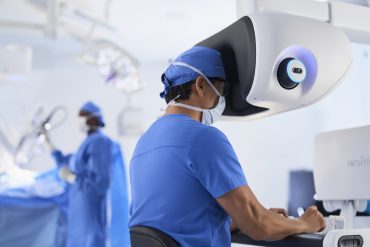
- HealthTech
Aging Fuels MedTech Boom as UBS Backs Devices, EU Stocks
5 minute read

Medical device innovation and aging populations drive sustained healthcare market expansion across therapeutic segments worldwide
Key Takeaways
- $159 billion medical devices market projected for mid-single-digit growth driven by global aging populations and diabetes technology expansion exceeding 15% annually
- UBS raises conviction on European equities ahead of Q2 earnings citing improving earnings momentum and attractive valuations after nearly a year of underperformance
- AI infrastructure spending jumps 25% to $250 billion in 2025 as tech giants accelerate capital expenditure on data centers and semiconductor infrastructure
Introduction
UBS reinforces its investment thesis on medical devices as a defensive sector while simultaneously upgrading European equities and artificial intelligence infrastructure. The Swiss bank positions these three areas as high-quality investment themes supported by structural demographic trends and technological advancement.
The medical devices sector demonstrates particular resilience in the current macroeconomic environment. UBS estimates the market at $159 billion with sustained growth prospects tied to aging populations and innovation in therapeutic areas.
Key Developments
UBS strategists, including Eric Potoker, released a comprehensive report positioning medical devices within their broader Longevity investment theme. The bank emphasizes that devices have become standards of care across multiple therapeutic areas.
Diabetes technologies emerge as the fastest-growing segment, with automated insulin delivery pumps and continuous glucose monitoring devices driving annual growth rates above 15%. Orthopedic implants, cardiovascular devices, and consumer health products including hearing aids and dental implants show strong momentum.
Post-pandemic surgical procedure demand has rebounded significantly. Although pent-up demand moderates, growth rates exceed pre-COVID levels across key markets.
Market Impact
The medical devices sector maintains defensive characteristics amid economic uncertainty. Employment-linked insurance coverage influences U.S. demand, but the Affordable Care Act has broadened access and reduced recession-related impacts.
European markets demonstrate stable demand for chronic care and diagnostics, with hearing aid sales recovering. China presents challenges with sluggish sales due to economic softness and pricing pressures from value-based procurement systems.
UBS upgrades European equities as the second-quarter earnings season approaches, citing improving earnings momentum and constructive valuations. Analysts revise earnings estimates upward after nearly a year of underperformance.
Strategic Insights
Demographics drive structural demand across medical devices. The global over-65 population is anticipated to rise nearly 20% by 2030, according to UN forecasts. This demographic shift creates sustained demand for therapeutic devices and diagnostic equipment.
Product innovation remains crucial for maintaining pricing power and replacing older technologies with higher-margin alternatives. Companies that lead in AI infrastructure, cloud services, and AI integration into core business products position themselves advantageously.
UBS identifies artificial intelligence as another defensive investment theme for 2025. Heavy capital expenditure by tech giants including Amazon, Microsoft, Apple, Google, Meta, and Tesla is expected to increase 25% primarily for AI infrastructure and next-generation data centers.
Expert Opinions and Data
According to the Weekly Global, UBS views medical devices as essential for extending lifespan and enhancing life quality. “We view medical devices as a key component of our broader Longevity theme,” strategists noted.
UBS emphasizes that “many devices have become standards of care,” highlighting ongoing product innovation’s importance for pricing power maintenance. The bank projects that population aging, lifestyle-related diseases, and increasing GDP in emerging markets will sustain structural demand.
“We continue to see strong underlying growth that we believe will sustain medical device valuations at or near current levels,” strategists stated. Global AI spending, excluding China, is projected to approach $500 billion by 2026, with industry revenues at similar levels.
Hyperscalers are expected to spend over $250 billion on AI-related capital expenditures in 2025, up from $188 billion in 2024. Cloud revenues among the top three providers are anticipated to reach $265 billion in 2025.
Conclusion
UBS maintains its defensive positioning across medical devices, European equities, and AI infrastructure as structural themes supported by demographic trends and technological advancement. The medical devices sector benefits from aging populations and therapeutic innovation, while European markets show improving earnings momentum ahead of quarterly results.
The convergence of demographic shifts, technological innovation, and improving market conditions creates multiple investment opportunities across these sectors. UBS’s strategic positioning reflects confidence in sustained growth drivers that transcend current macroeconomic uncertainties.
Disclaimer: This article is provided for information purposes only and does not constitute investment advice, an offer, or a solicitation to buy or sell any financial instrument.








